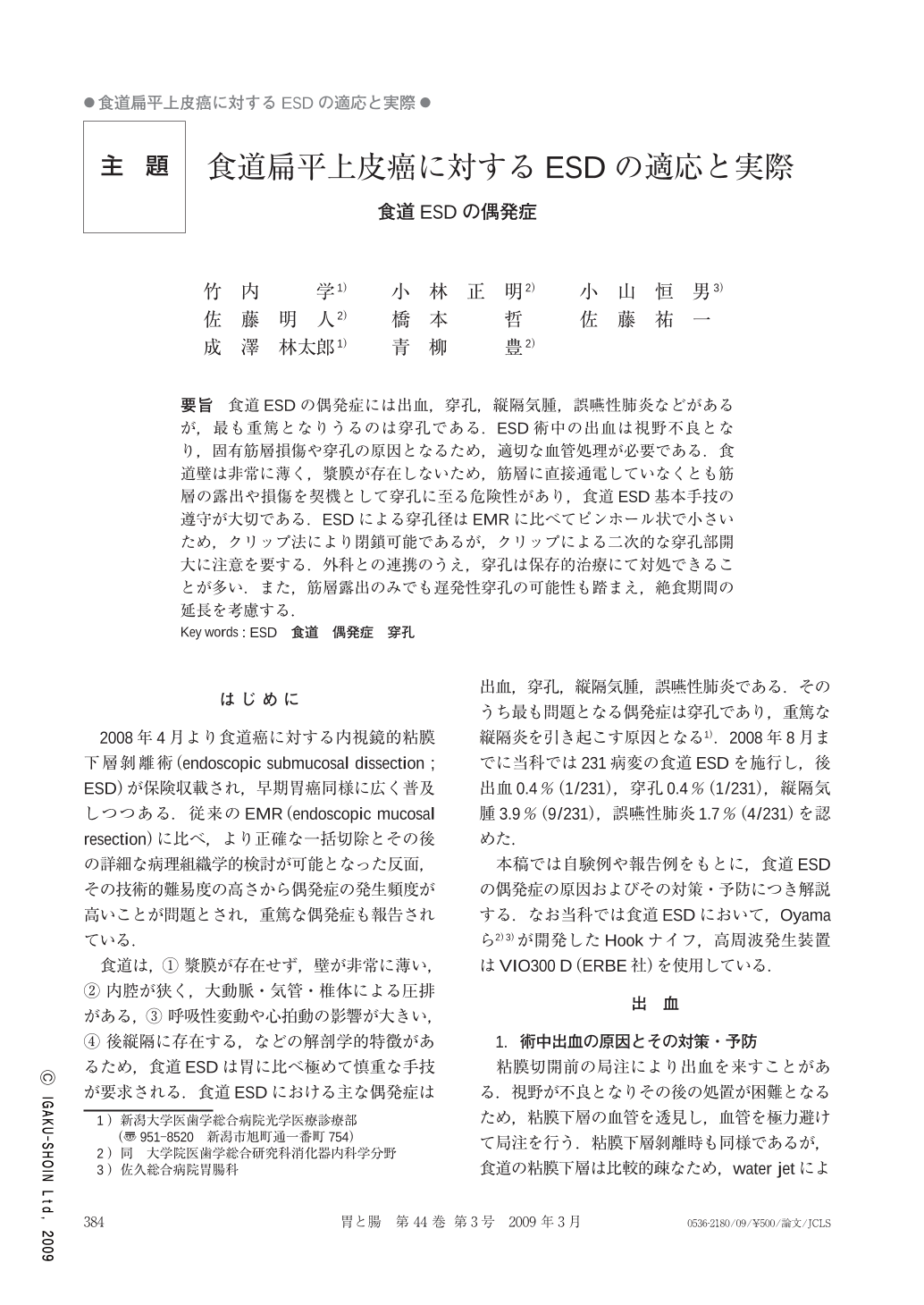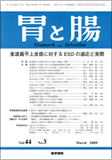Japanese
English
- 有料閲覧
- Abstract 文献概要
- 1ページ目 Look Inside
- 参考文献 Reference
- サイト内被引用 Cited by
要旨 食道ESDの偶発症には出血,穿孔,縦隔気腫,誤嚥性肺炎などがあるが,最も重篤となりうるのは穿孔である.ESD術中の出血は視野不良となり,固有筋層損傷や穿孔の原因となるため,適切な血管処理が必要である.食道壁は非常に薄く,漿膜が存在しないため,筋層に直接通電していなくとも筋層の露出や損傷を契機として穿孔に至る危険性があり,食道ESD基本手技の遵守が大切である.ESDによる穿孔径はEMRに比べてピンホール状で小さいため,クリップ法により閉鎖可能であるが,クリップによる二次的な穿孔部開大に注意を要する.外科との連携のうえ,穿孔は保存的治療にて対処できることが多い.また,筋層露出のみでも遅発性穿孔の可能性も踏まえ,絶食期間の延長を考慮する.
The Complications in esophageal endoscopic submucosal dissection(ESD) are perforation, bleeding, mediastinal emphysema and aspiration pneumonia, and in these complications, perforations possibly become the most serious condition because of mediastinal abscess. Intraoperative bleeding disturbs the good fields during ESD and causes damage of the proper muscle or perforation, so it is essential to stop the bleeding immediately or prevent bleeding efficiently. Because the esophageal wall is very thin and has no serosa, exposure and damage of the circular muscle possibly leads to perforation and mediastintis. The key point in preventing perforation is to visually recognize the submucosal layer and the proper muscle before dissecting. Most intraoperative perforations by ESD are very small and can be closed endoscopically using a clipping method. However, because of the risk of secondary enlargement in the perforation using endclips, careful clipping procedures are needed. If we damage the esophageal circular muscle during ESD, we shouldn't permit the patient to ingest food for several days to prevent delayed perforation.

Copyright © 2009, Igaku-Shoin Ltd. All rights reserved.


